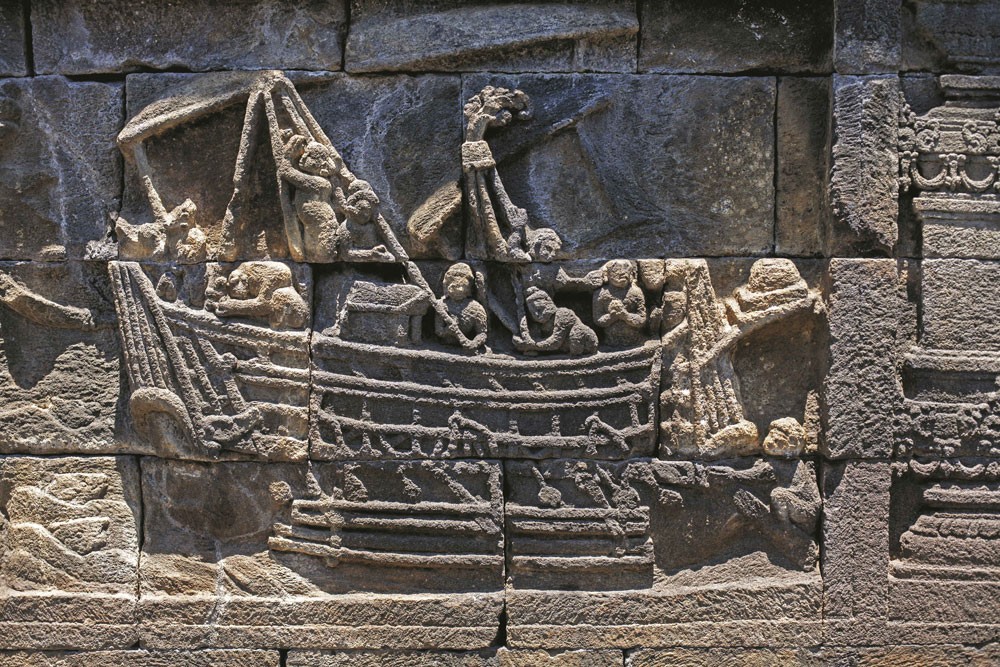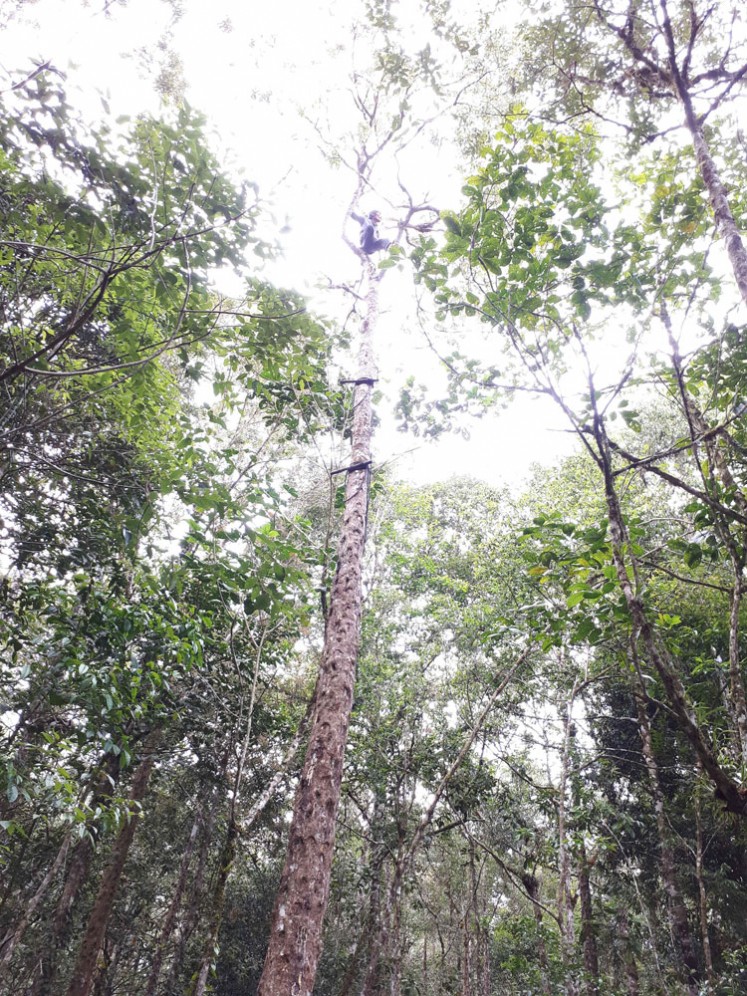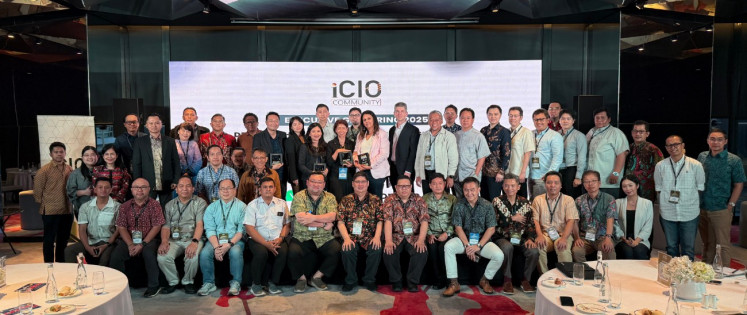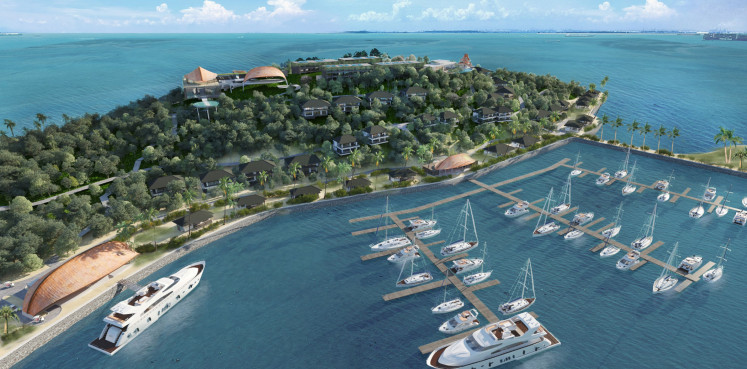Popular Reads
Top Results
Can't find what you're looking for?
View all search resultsPopular Reads
Top Results
Can't find what you're looking for?
View all search resultsThe economy & ecology of Indonesian biodiversity
Indonesia’s abundance of natural resources in terms of plants and spices turns out to be a double-edged sword.
Change text size
Gift Premium Articles
to Anyone
Sebastian Partogi
The Jakarta Post/Jakarta
Indonesia’s abundance of natural resources in terms of plants and spices turns out to be a double-edged sword.
“I hope […] people are reminded that ‘ecology’ and ‘economy’ come from the same root word: oikos, our home. Yet we don’t treat our planet as home,” Indian environmental activist Vandana Shiva once said in an interview published by the weekly newsmagazine Tempo English on July 11, 2013.
Shiva was referring to how overexploitation of natural resources had resulted in terrible financial losses and environmental consequences.
Her notion could be applied to the current state of Indonesia’s plant biodiversity, which has severely declined because of overexploitation and lack of sustainable agricultural practices.
According to Indonesian Botanical Garden Foundation representative Didiek Setiabudi Hargono, currently there are 400 fruit species, 370 plant species, 70 tuber species and more than 55 types of spices that are known to grow in Indonesian soil.
The numbers, however, are yet to represent the country’s overall biodiversity because there are a lot of regions, such as the ones in Papua, yet to be explored by researchers.
“It has taken 20 years of research to finally discover the orangutan species Pongo tapanuliensis in North Sumatra, for example. Similarly, we can also find new plant species in Indonesia’s rarely explored and remote forests,” Didiek said, referring to a rare orangutan species recently discovered by scientists
Indonesia’s rich biodiversity is a consequence of the archipelagic nation’s vast geographical expanse, with each region having its own distinctive soil and weather characteristics, providing home for different endemic creatures, according to Didiek.
The plants, in particular, have been used for various purposes, ranging from cooking ingredients to medicine.
“Various medical research studies have also provided evidence that Indonesian spices and plants — such as ginger and the ciplukan leaves (Physalis angulata) — are medically potent,” Syarief Hidayatullah Islamic State University medical anthropology professor Rusmin Tumanggor said.
Standing tall: Kemenyan trees (Styrax benzoine) and its variants are found all over North Sumatra. (Photos courtesy of PT Jalur Rempah Nusantara/.)Starting from around the 15th and 16th century, the Indonesian archipelago and its rich biodiversity had attracted European colonists, who through cooperation with power-hungry local rulers, applied violent trading strategies that exploitated both the environment and the people living in it.
The overexploitation of plants and spices, with no sustainability measures, has left a destructive legacy that still affects Indonesia to this day.
Camphor, produced in Barus, North Sumatra, is one example of Indonesia’s ecological decline. In the past it was used in religious rituals across the nation in which corpses were washed with camphor water. The commodity reached the peak of its popularity between the 16th and 17th centuries, when European traders sold it at a very high price.
Now, camphor is known only as an insect repellent used in bathrooms, and in its synthetic form made of oil derivatives. The European traders’ excessive and unsustainable hunt for camphor resulted in the scarcity of the precious spice in present day Indonesia.
“Because we have so many spices and plants, we have gotten used to overexploitation. We rely solely on nature’s provision without revitalizing the plants. The European colonists, in cooperation with local rulers, applied this system. After independence [in 1945], we have also made no effort to change the colonists’ destructive system,” Didiek said.
The marginalization of local farmers is another reason why Indonesia’s agricultural capacity has been declining, according to Didiek.
“Price fixing of imported agricultural products has caused financial losses for our farmers. How can we expect our farmers to cultivate the plants properly when there are no guarantees they can make a living through the profession?” Didiek said.
While delivering a speech at Bogor Agricultural University (IPB) in September, as quoted by kompas.com, President Joko “Jokowi” Widodo lamented that a lot of the university’s graduates chose to work in the banking sector instead of utilizing their knowledge to develop Indonesia’s declining biodiversity and agriculture industry.
As a consequence of the decline in biodiversity, Indonesia, which was once the center of the world’s spice trade,now imported spices, such as pepper, ginger and nutmeg from foreign countries to cater to local demand, in a system allegedly tied to cartels, Didiek said.
“If we keep going this way, we could be the world’s biggest spice importer because, for example, considering our diet culture, there is not a single Indonesian dish that does not include spices in the ingredients,” he said.
The economic consequences of the country’s unsustainable agricultural practices are already evident but what is even more destructive is the ecological impact.
“If people continue to engage in illegal logging and forest burning, animals will die, and it will upset the whole ecosystem. Therefore, we should make an effort to preserve the natural environment,” Didiek said.
According to Didiek, there are several strategies that could be used to revitalize Indonesia’s plant biodiversity.
For instance, the government could conduct an assessment of each region’s in agricultural potential and designate certain ones to cultivate and revitalize particular species which have high economic value.
“You can cultivate camphor in Medan, North Sumatra, and designate places to cultivate nutmeg, cloves, cardamom and cinnamon, among others, depending on which region has the most suitable soil. We have to determine which species are rarely found now and focus on regenerating them,” Didiek said.
Didiek also suggested the government facilitate farmers to create communities where they could exchange information about the latest agricultural technology or seed production..
“We already have graduates from IPB who are very competent in their fields; now it’s time to apply the research studies to improve farmers’ capacity and welfare,” he said.












